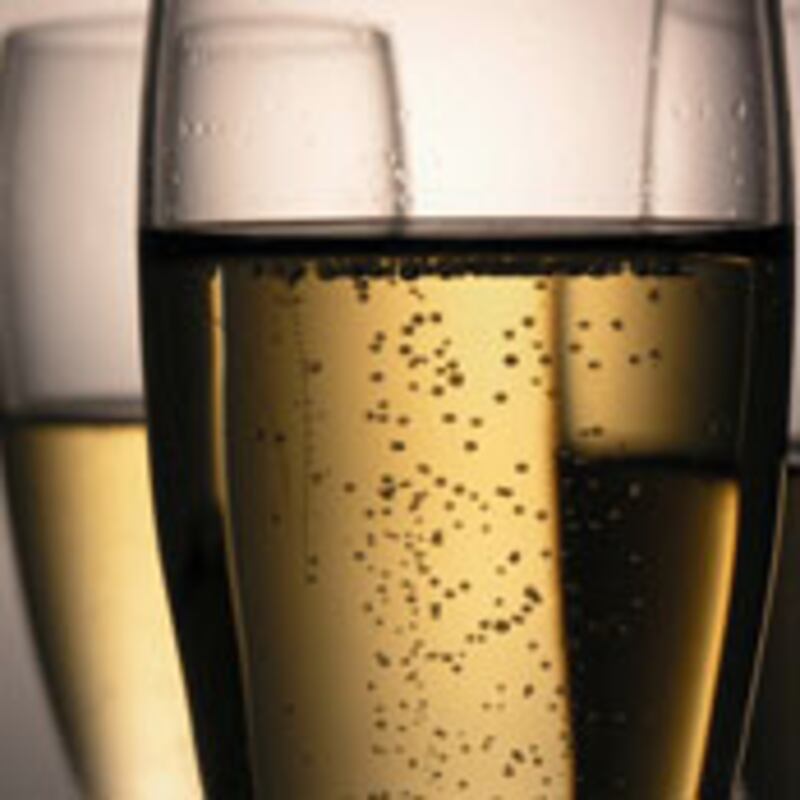
The bursting of the economic bubble has led to the bursting of the bubbly bubble. Overall Champagne sales are down as much as 40 percent this year. But as we finish the month when almost half of all sparkling wine is purchased, there’s one bright spot: grower-Champagnes.
The big brands produce millions of cases a year, and then, with little apparent irony, spend lavishly on marketing to impart an air of luxury and exclusivity.
The current darlings of the bubbly set, these boutique growers make Champagne from grapes grown on their own small estates. They typically produce wines with more character and sense of place than the stuff put out by the big-brand négociants, which buy up grapes from hundreds of small growers and blend them together to achieve a consistent house style—you know, that toasty, saccharine fizz that’s sold everywhere for $40 a pop. The big brands produce millions of cases a year, and then, with little apparent irony, spend lavishly on marketing to impart an air of luxury and exclusivity. (It is said that a Moët et Chandon cork pops somewhere on earth every second.)
As luxury and exclusivity fade for the moment, the grower-producers—known as récoltant-manipulants, or “harvest makers”—have increased their share of the U.S. market to 3 percent, still miniscule, but up from practically nothing 10 years ago. Their output is measured in thousands of cases versus millions, but grower Champagnes can increasingly be found in good retail stores and restaurants. (Grower-producers can be identified by the tiny RM on their labels, versus the NM for négociants-manipulants.)
That’s not to say that all grower Champagnes are great. Quirky, yes, but some can be unpolished, to say the least. In this wild west of grower Champagne, there are few guarantees, other than the backing of a reputable importer.
Ah, but then there’s the Special Club. If grower-producers are the darlings of Champagne, the Special Club represents their vanguard.
The club, officially known as Club Trésors de Champagne (“Treasures of Champagne”), was created in 1971 by a band of independent growers looking to counter the domination of the big houses. The latter had their own organization, the syndicat des Grandes Marques, that was closed to all but the top producers. The group, later renamed the Club des Grandes Marques, counts among its 24 members powerhouses such as Bollinger, Tattinger, Dom Perignon, Krug, Moet et Chandon, and Veuve Clicquot. (It’s worth noting that the last three names, along with Ruinart and Mercier, are all owned by the luxury giant LVMH.)
Let’s be clear: The big-name négociants still make some very fine Champagne, particularly their smaller vintage or single-vineyard bottlings. But over the years, as business concerns and focus groups have trumped winemaking, many of their flagship brands have descended into mass-market mediocrity.
In the face of that, the mission of the Special Club is to showcase the very best examples of terroir-driven Champagne from particular villages. They do this through a uniquely cooperative process. Each year, members—made up of 26 leading grower-producers—submit their very best wine, but only if they believe it to be something extraordinary. (In 2003, for example, a notoriously difficult vintage, no wines were submitted). The base wines, in their still form, are blind-tasted and peer-reviewed. After a minimum of three years of aging, the wines are tasted again. If the Club approves of the final product, it may be labeled a Special Club Champagne.
If the Grandes Marques represent the triumph of marketing and economies of scale, the growers are the champions of terroir and artisanal, small-batch production. I like to imagine the Special Club producers as scrappy superheroes in berets, fighting the forces of global homogenization and safeguarding our right to distinctive, soulful Champagne.
In reality, the growers are quite well off, after years of supplying grapes to the big houses under lucrative contracts. But I still like the imagery.
So, perhaps, might Christopher Bender, wine director and general manager of the restaurant Mas in New York’s West Village. The restaurant favors small, sustainable producers, and carries only grower Champagnes. Bender recently created a separate category on his wine list for Special Club selections, to call attention to them and show customers “what each village or vineyard tastes like,” he says.
The list currently includes 10 Special Club selections from makers such as Pierre Gimonnet, Larmandier, Gaston Chiquet, and Roland Champion.
At a recent tasting at Mas, Bender selected three favorites from his Special Club list. We tasted from Burgundy glasses, which he uses as a rule with Special Club wines.
The first, A. Margaine, Special Club, 1er Cru Villers-Marmery, Brut 2002 ($165 on his list, but around $75 retail), was chalky, lemony, dense and forceful. It is also a classic example of terroir-driven winemaking, coming from an island of chalky-soiled Chardonnay (and a local clone of Chardonnay, at that) in the otherwise Pinot Noir-driven Montagne de Reims. The result is rounder and more powerful than a classic blanc de blancs.
Next came a Marc Hebrart Special Club, 1er Cru Mareuil-sur-Äy, Brut 2004 ($150, or $75 retail), a voluptuous 60 percent Pinot Noir-40 percent Chardonnay blend with a subtle backbone of acidity and minerality and a lingering finish. Bender pronounced it his “go to” Champagne, and I was inclined to agree.
Well, at least until we got to the third selection, a J. Lassalle Cuvée "Spécial Club" Brut Millésimé 2000 ($225) that Mas was fortunate enough to get special ordered from the importer, Kermit Lynch. It was a dazzling 60 percent Chardonnay-40 percent Pinot Noir from Chigny-les-Roses in the Montagne de Reims, with a nose that Bender likened to a classic white Burgundy, and a long, complex finish.
All three were stunning wines, the kind you would want to have with dinner—heck, with anything. And therein lies a subtle but often forgotten point: Behind the bubbles, Champagne is simply wine, with all of the same nuances. At Mas, Bender and his staff often create multi-course dinners paired with Special Club wines.
Since adding the Special Club category to the wine list, Champagne sales at Mas have increased threefold. “My worry is running out by the end of the year,” says Bender. “That’s a good problem to have.”
Plus: Check out Hungry Beast for more news on the latest restaurants, hot chefs, and tasty recipes.
Amy Cortese has written for The New York Times, Business Week, and Portfolio.





